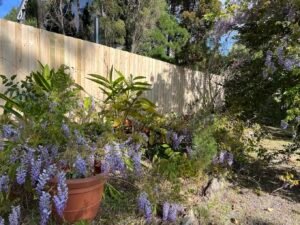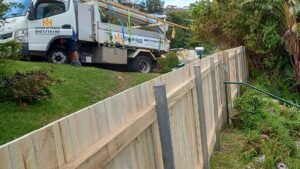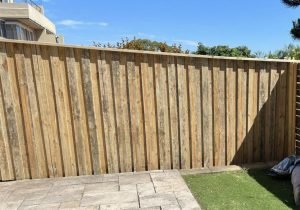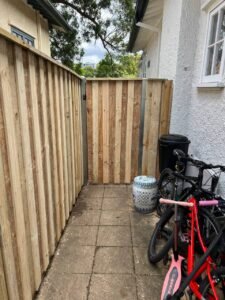Installing a backyard fence on a slope in Sydney requires more than standard fencing know-how. With the city’s varied terrain, particularly in hilly and elevated suburbs, homeowners often face unique challenges when trying to enclose their outdoor space. However, with the right approach, materials, and expertise, a sloped backyard fence can be both functional and visually appealing.
Understanding Your Property’s Slope and Soil
One of the most common questions we hear is, “How do you build a fence on a slope?” The answer depends on several factors, including the slope’s steepness, soil conditions, and the homeowner’s preferred aesthetic. Before starting the project, ask yourself:
• What is the most cost-effective solution that still looks great and lasts?
• Do I want the top of my fence to appear level (horizontal), follow the slope (raked), or step down gradually (stepped)?
• Do I want the bottom of the fence to be straight, stepped, or follow the ground’s natural line?
• Can I live with gaps under the fence that might occur on a slope?
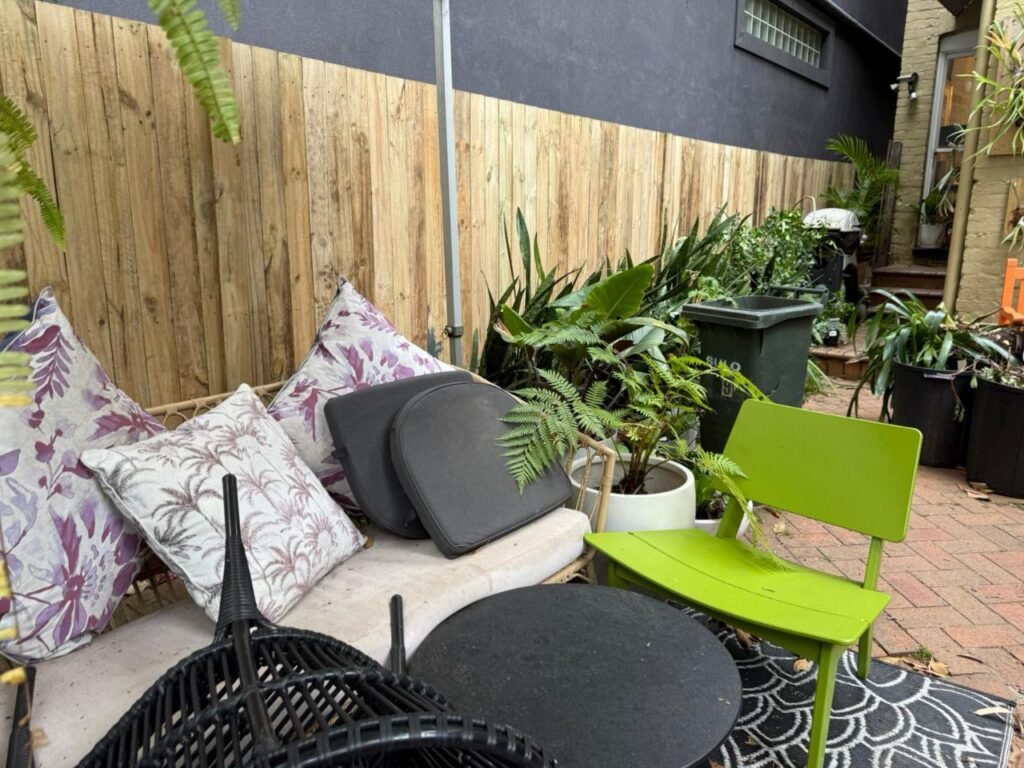
Common Challenges of Sloped Fencing
Building on sloped land in Sydney can involve a few key obstacles:
- Stability and Height Consistency: Ensuring your fence maintains a consistent appearance and strong structure despite uneven ground.
- Soil Conditions: Rocky or compacted soil can make digging post holes difficult and time-consuming.
- Accessibility: Many Sydney homes have limited access or narrow laneways, which can restrict the transportation of machinery and materials.
Each of these issues needs to be addressed with a well-thought-out plan that suits your specific backyard conditions..
Smart Solutions for Sloping Backyards
There are two popular options when it comes to installing fences on slopes:
- Stepped Fencing: This method involves placing each panel horizontally and stepping them down with the slope. It offers a neat, structured appearance but may leave small gaps at the bottom.
- Raked Fencing (also known as sloped or contoured fencing): The panels follow the angle of the slope, providing a smooth, flowing appearance. This is ideal for gentle slopes and reduces gaps underneath.
A professional site inspection is crucial before commencing any fencing project. This helps identify potential obstacles, such as tree roots, drainage issues, or underground pipes, and informs the best approach for installation. It also ensures compliance with local council regulations and boundary guidelines.
Choosing the Right Materials
Durability is key when installing fences on uneven ground. Opt for high-quality materials such as treated timber, colourbond steel, or aluminium, which are resistant to weather and pests. These materials not only offer longevity but also provide a range of design options to match your home and garden style.
Why Choose Repair My Fences
At Repair My Fences, we specialise in handling the challenges of sloped and uneven terrain. Our team is highly experienced in customising fencing solutions to suit Sydney’s varied landscapes. Whether you’re after a modern modular wall or a traditional timber fence, we bring both expertise and care to every project.
We understand the importance of strong, secure, and attractive fencing that complements your home. That’s why we take the time to inspect the site, offer honest advice, and recommend the best installation approach for your unique property.
Get in Touch
Don’t let a tricky slope stop you from building the fence you need. Let our team do the hard work while you enjoy the finished result. Contact Repair My Fences today to organise a consultation and take the first step toward your perfect backyard enclosure.
REFERENCES
• New South Wales Government. (n.d.). Fences and boundaries. Retrieved July 25, 2025, from nsw.gov.au
• Master Builders Association of NSW. (n.d.). Building tips for sloped and uneven sites. Retrieved July 25, 2025, from mbansw.asn.au
• BlueScope Steel. (n.d.). Why choose COLORBOND® steel fencing. Retrieved July 25, 2025, from colorbond.com
• Housing Industry Association. (n.d.). Fencing standards and installation guides. Retrieved July 25, 2025, from hia.com.au


